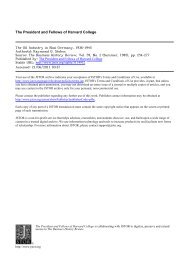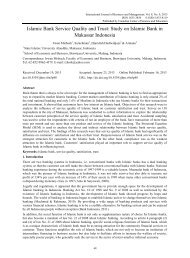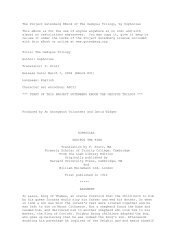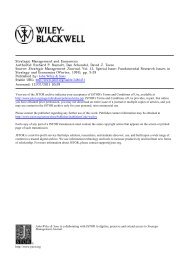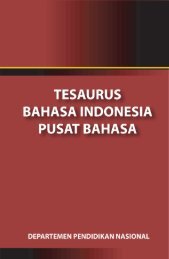The Gold Dinar
The Gold Dinar
The Gold Dinar
You also want an ePaper? Increase the reach of your titles
YUMPU automatically turns print PDFs into web optimized ePapers that Google loves.
6 Review of Islamic Economics, Vol. 8, No. 1, 2004<br />
and, therefore, the conventional banking system. <strong>The</strong> pricing of<br />
Islamic financial products is likely to be tied to the market interest<br />
rates, for if there are price differentials between the two, then<br />
arbitrage opportunities would set in, thereby, enabling market<br />
participants to make risk-free profits. Arbitrage between the two<br />
banking systems would, accordingly, bring about a convergence<br />
between the two banking systems. This convergence is no fault of the<br />
Islamic banks, rather, it is the result of their co-existence with the<br />
conventional banks, the two being linked through the fiat money<br />
interest-based system. <strong>The</strong> Malaysian experience is a good example.<br />
Since its inception in Malaysia in 1983 for example, both the Islamic<br />
banking and the conventional banking systems have responded to<br />
each other and thereby attained some degree of convergence.<br />
Consider home financing. During the initial phase of Islamic<br />
banking, a home buyer would start paying the instalments to the bank<br />
only after the house had been completed, i.e. about two years from<br />
the time of signing the sales and purchase agreement. <strong>The</strong> buyer did<br />
not need to make any interim payments (during the construction<br />
period) as is the case with the conventional financing. <strong>The</strong> interim<br />
payments are, in fact, interest charges for payments made by the bank<br />
to the developer during the construction period. In this phase of<br />
Islamic banking, the non-existence of interim payments in the Islamic<br />
home financing made it cheaper than the conventional one, increasing<br />
demand for such financing to the point where the number of non-<br />
Muslims who financed house purchases using Islamic modes exceeded<br />
that of the Muslims. This increase in demand, of course, put pressure<br />
on the Islamic bank to increase its financing rate. Currently, those<br />
wishing to finance homes on Islamic principles must pay an initial<br />
deposit, equal to three monthly instalments, into an investment<br />
account which pays a return lower than the cost of financing – and,<br />
in addition, the first instalment in the month immediate after the bank<br />
releases the first payment to the housing developer, set at about ten<br />
per cent of the total price of the house and payable on completion of<br />
the foundations. <strong>The</strong>se changes made Islamic financing more<br />
expensive than the conventional ones and people accordingly opted<br />
for the conventional mode or refinanced the existing Islamic<br />
contracts. This is but one example of how the two banking systems<br />
have moved towards convergence.




